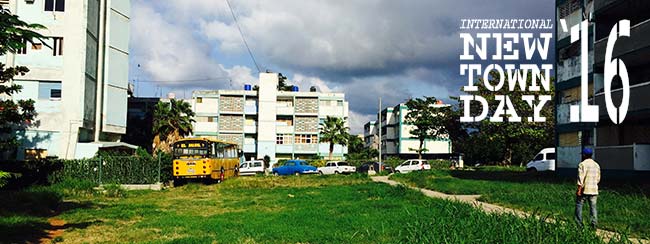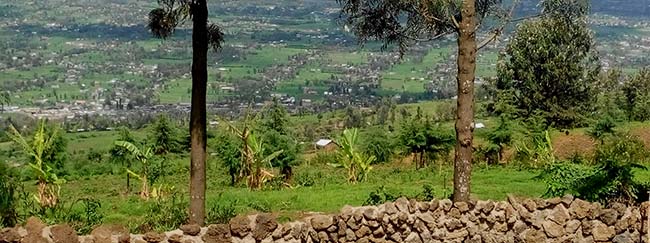This time we look at two New Towns whose current approaches include food production and community building in their urban planning strategies. Far away from each other, one in Central America, the second on the African continent, Alamar and Nakuru couldn’t be more close in their approach.
Alamar was built in 1970s as a satellite city of Havana, housing Castro’s workers. Made of identical apartment blocks, the neighborhood withstands the distance from the Havana City center, the lack of urban services and an overall urban decay. Jorge Peña Díaz, Professor of Urban Design at the CUJAE University in Havana explains how Alamar demonstrates “the clash between high social aspirations and political commitment with the challenge of maintaining and reinventing a new settlement in the context of a crisis that starts to recede as Cuba gets closer to global influences.”
Nonetheless Alamar demonstrates something unique and extremely valuable. Born out of necessity, residents developed the large empty plots in the city into urban community gardens during the 1980s and 1990s. Now these ‘organoponico’s’ produce 95% of green vegetables consumed in Alamar. Seen as a vibrant opportunity, Professor Peña Díaz concludes: “Organic urban food production can represent a source of inspiration and an important component for updated urban renovation strategies.”
On the African continent, Nakuru officially became a city in 1952. It consists of a large number of farms in an urban fabric that is an African version of Frank Lloyd Wright’s Broadacre City. “It is an excellent example of how rural and urban features can merge together into one urban fabric” says Lawrence Esho, professor at the Technical University of Kenya. And this is true: gardening private plots and even public land is a common practice in the cities and agriculture at large represents the backbone economy of Kenya.
Only recently, and with an innovative and forward-looking approach, the local government started to promote urban and peri-urban cooperatives in the Nairobi region. The 2011 Urban Areas and Cities Act requires that every city prepares an integrated development plan in order to provide a framework for regulated urban agriculture. The government strategy for the growth and development of Nairobi metropolitan region up to 2030 urges for active measures and actions to prevent urban sprawl on prime peri-urban agricultural land. Another innovative feature is the government’s decision to include agriculture among metropolitan land uses, thereby giving it equal status as working, housing or traffic.
Nakuru, located 140km from Nairobi, has already been testing opportunities to include urban agriculture in urban planning for decades. Therefor it can definitely offer enlightening experiences on how to organize the regional metabolism of food production.


